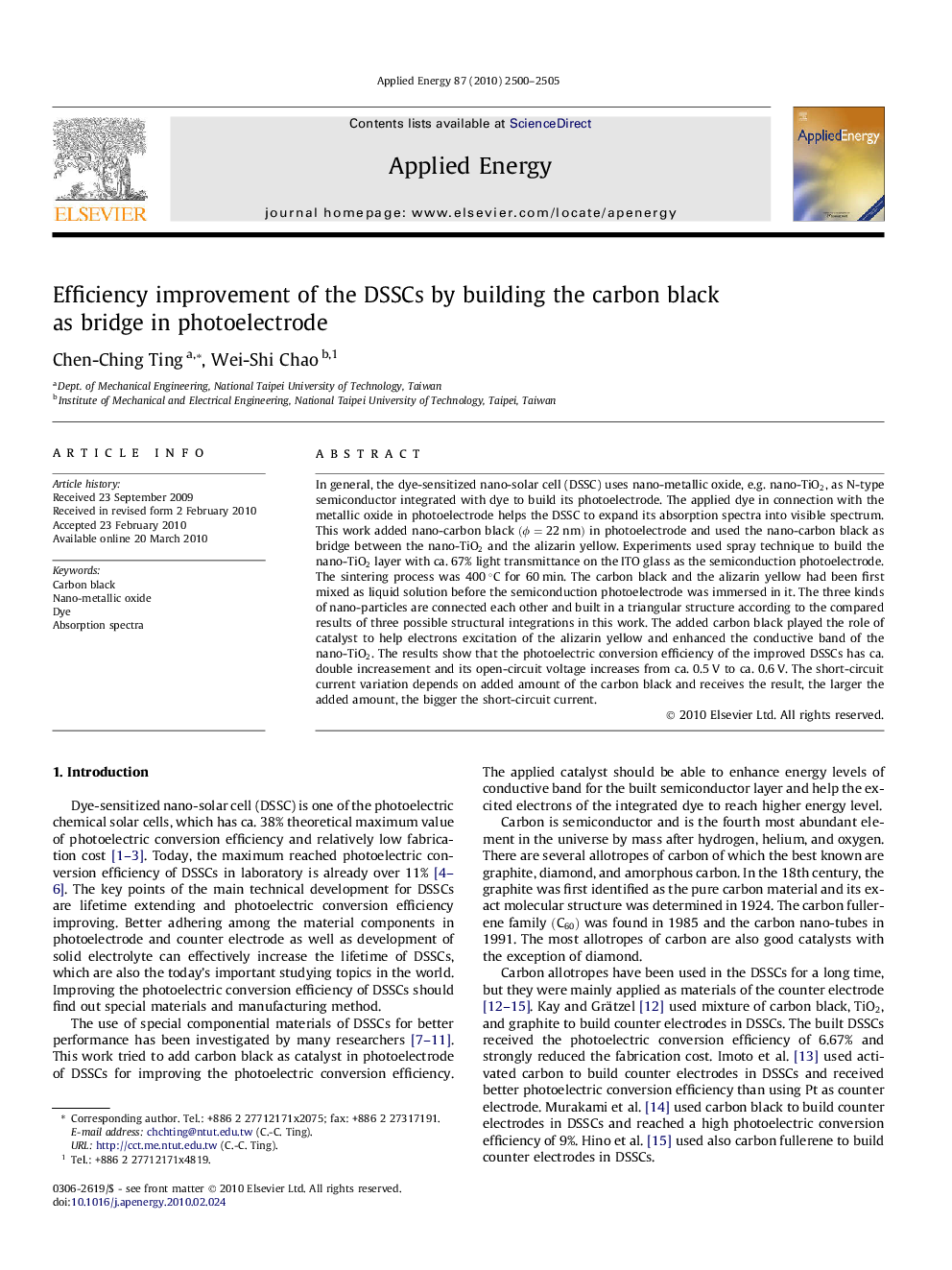| کد مقاله | کد نشریه | سال انتشار | مقاله انگلیسی | نسخه تمام متن |
|---|---|---|---|---|
| 244330 | 501947 | 2010 | 6 صفحه PDF | دانلود رایگان |

In general, the dye-sensitized nano-solar cell (DSSC) uses nano-metallic oxide, e.g. nano-TiO2TiO2, as N-type semiconductor integrated with dye to build its photoelectrode. The applied dye in connection with the metallic oxide in photoelectrode helps the DSSC to expand its absorption spectra into visible spectrum. This work added nano-carbon black (ϕ=22nm) in photoelectrode and used the nano-carbon black as bridge between the nano-TiO2TiO2 and the alizarin yellow. Experiments used spray technique to build the nano-TiO2TiO2 layer with ca. 67% light transmittance on the ITO glass as the semiconduction photoelectrode. The sintering process was 400°C for 60 min. The carbon black and the alizarin yellow had been first mixed as liquid solution before the semiconduction photoelectrode was immersed in it. The three kinds of nano-particles are connected each other and built in a triangular structure according to the compared results of three possible structural integrations in this work. The added carbon black played the role of catalyst to help electrons excitation of the alizarin yellow and enhanced the conductive band of the nano-TiO2TiO2. The results show that the photoelectric conversion efficiency of the improved DSSCs has ca. double increasement and its open-circuit voltage increases from ca. 0.5 V to ca. 0.6 V. The short-circuit current variation depends on added amount of the carbon black and receives the result, the larger the added amount, the bigger the short-circuit current.
Journal: Applied Energy - Volume 87, Issue 8, August 2010, Pages 2500–2505